Are you tired of constantly having to open and close your door every time you enter or leave your house? An automatic door may be the solution for you.
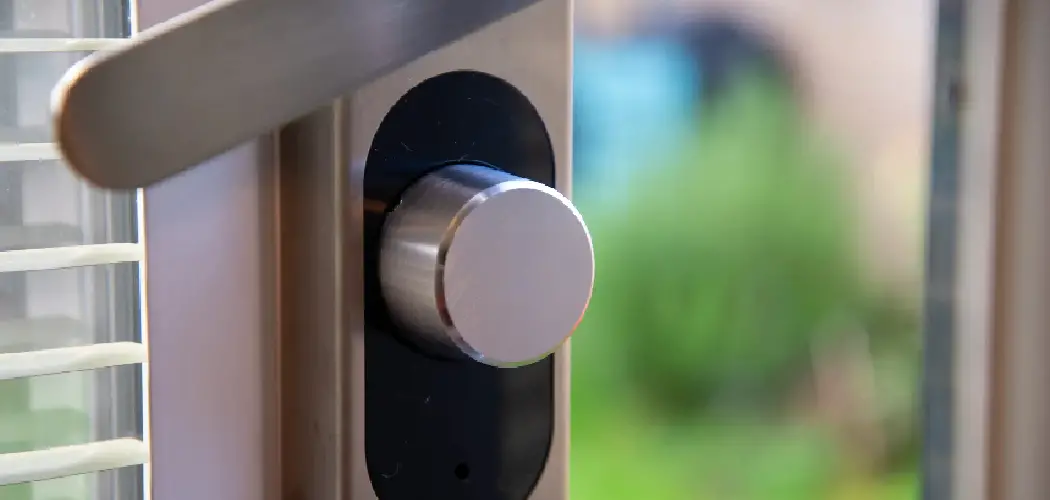
In our modern world, the convenience and security offered by automatic doors have become increasingly prevalent, both in commercial settings and home environments. Learning to lock an automatic door effectively is crucial for ensuring not only the safety of your premises but also the peace of mind that comes with knowing your space is secure.
This guide on how to lock automatic door aims to demystify the process, providing you with easy-to-follow steps and key insights to ensure that your automatic door functions as a robust barrier against unauthorized access.
Whether you’re dealing with sliding, swinging, or revolving automatic doors, mastering their locking mechanisms will enhance your security protocol, making it an indispensable part of your daily routine.
What are the Benefits of Locking Your Automatic Door?
There are several benefits to locking your automatic door, including:
- Increased Security: First and foremost, a locked automatic door prevents unauthorized access, keeping your space safe from potential intruders.
- Reduced Energy Costs: By locking the door, you can prevent unnecessary air leakage or drafts that can increase your energy bill.
- Control over Entry/Exit: Some automatic doors come with features that allow you to control who can enter or exit your premises, adding an extra layer of security.
- Convenience: With an automatic door, locking and unlocking is a hassle-free process, saving you time and effort compared to manually locking traditional doors.
Now, let’s dive into the steps on how to do it effectively.
What are the Different Types of Door Locks?
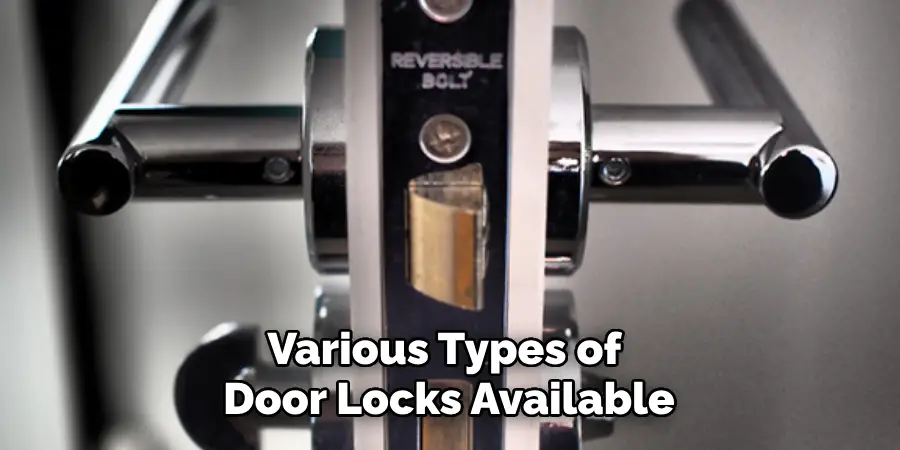
There are various types of door locks available, each with its unique features and security levels. Some common types include:
- Deadbolts: These are single-cylinder locks that require a key to unlock from the outside and have a thumb-turn mechanism on the inside.
- Padlocks: These portable locks come in two pieces that interlock with a shackle, and a key or combination is used to secure them.
- Electronic Locks: These can be operated with a digital code, biometric scan, or smartphone app and offer added convenience and security features.
- Smart Locks: Similar to electronic locks, smart locks use advanced technology such as Wi-Fi connectivity and voice control for remote access and monitoring.
- Mortise Locks: These locks have a locking mechanism built into the door handle and are often used in commercial settings.
When choosing a door lock, consider factors such as security needs, budget, and compatibility with your door type.
What Will You Need?
Before starting the process, it is essential to gather all the necessary tools and equipment to lock your automatic door. Here are a few things you may need:
- Key or Access Code: Depending on the type of automatic door, you will need either a key or an access code to lock it.
- Instructions Manual: If this is your first time locking an automatic door, it is best to have the instructions manual handy for reference.
- Optional Tools: Some automatic doors may require additional tools, such as a screwdriver or an Allen key, to lock them effectively. Be sure to check your specific door’s requirements.
Once you have gathered all the necessary items, you can begin the process of locking your automatic door.
10 Easy Steps on How to Lock Automatic Door
Step 1. Identify the Locking Mechanism:
Start by locating the locking mechanism on your automatic door. This could be on the side, top, or bottom of the door frame. Understanding where the lock is and how it functions is crucial for proper engagement. Additionally, make sure to read the instructions manual for any specific details on your door’s locking mechanism.
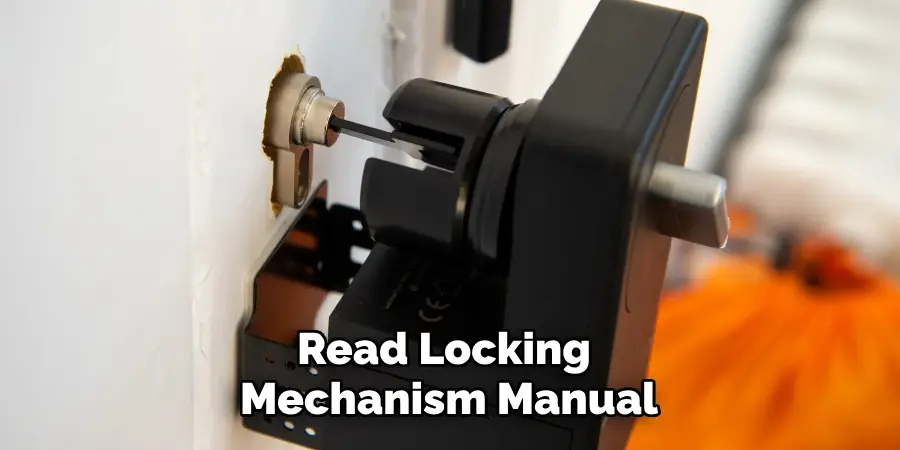
Step 2. Close the Door:
Ensure the door is completely closed before attempting to lock it. An automatic door must be in the closed position to effectively engage the locking mechanism. Check for any obstructions that might prevent the door from closing fully, such as debris or objects in the door path. Proper closure of the door ensures that the lock can secure the door firmly, providing optimal security.
Step 3. Activate the Lock:
Once you have ensured the door is fully closed, activate the locking mechanism. Depending on your automatic door, this could involve turning a key, entering an access code, or pressing a button located on the door or a remote control.
If your door operates with a key, insert it into the lock and turn it to the lock position. For doors that require an access code, enter the code on the keypad. For others, simply press the designated lock button on the control panel or remote. Make sure the lock is fully engaged and the door is securely fastened.
Step 4. Verify the Lock:
After activating the lock, it’s essential to verify that the door is indeed locked. Try to open the door without using the access method (key, code, or remote). If the door does not budge, the lock has been successfully engaged. This step is crucial to ensure that your automatic door is properly secured and that the locking mechanism is working as expected. This not only provides peace of mind but also ensures the safety and security of your premises.
Step 5. Double-check the Door’s Alignment:
Periodically, it’s important to check the alignment of the door to ensure it hasn’t shifted, which could affect the efficiency of the locking mechanism. Misalignment can occur due to regular use or changes in the surrounding structure and may prevent the door from locking properly. Gently push and pull on the door to ascertain it’s securely in place and there’s no undue movement that suggests alignment issues. If you detect any alignment problems, consult the instruction manual or contact a professional to adjust the door accordingly. Ensuring the door is correctly aligned guarantees that the lock functions effectively, maintaining a high level of security for your space.
Step 6. Conduct Routine Maintenance Checks:
Regular maintenance is crucial to ensuring your automatic door and its locking mechanism remain in top working order. Schedule routine checks to inspect the condition of the lock the door’s alignment, and to identify any wear and tear. Look for signs of damage or corrosion on the lock and its surrounding components.
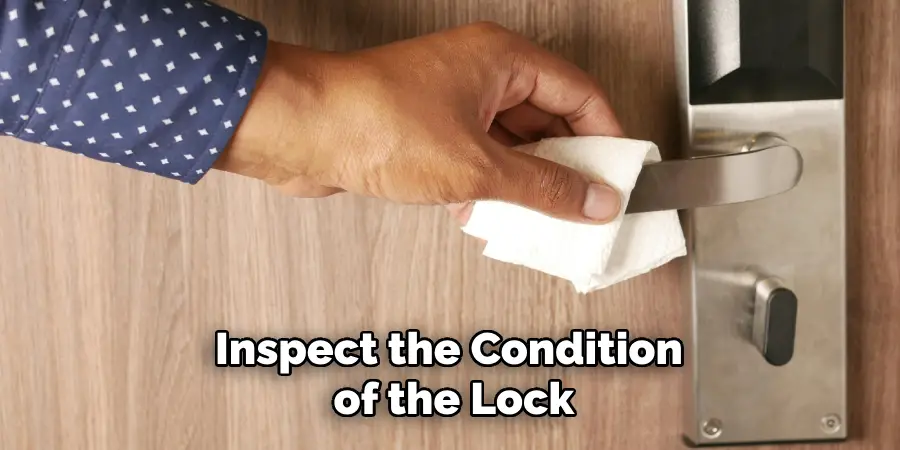
Cleaning the lock mechanism with a dry cloth to remove dust and debris can also help maintain its functionality. If you discover any issues that could impair the lock’s performance during your inspection, address them promptly to avoid compromising your security. This proactive approach not only extends the lifespan of your automatic door and its locking mechanism but also reinforces the safety and security of your premises.
Step 7. Utilize Security Features:
Many automatic doors come equipped with advanced security features such as alarms, surveillance cameras, or access control systems. Take full advantage of these features to enhance the security around your automatic door.
Enabling alarms can deter unauthorized entry, while surveillance cameras can provide visual monitoring of the door’s vicinity. Access control systems allow you to set permissions for who can unlock the door, offering an additional layer of security. Familiarize yourself with these features and integrate them into your routine to ensure comprehensive protection for your space.
Step 8. Keep a Spare Key or Backup Access Code:
Always have a spare key or backup access code stored in a safe and accessible place. This ensures that you can still lock or unlock your automatic door even if the primary key or code is lost, stolen, or fails to work. For systems that use a key, consider making a copy and keeping it in a secure location known only to authorized persons.
If your system operates with an access code, have a backup code set and store it securely. Having these precautions in place can prevent lockouts and ensure that your security measures remain effective and uninterrupted, maintaining the safety and integrity of your premises.
Step 9. Educate Others on Proper Use:
It’s essential to train any individuals who have access to the automatic door on how to operate it correctly, including how to lock and unlock the door securely. This includes family members, employees, or guests that might need to use the door.
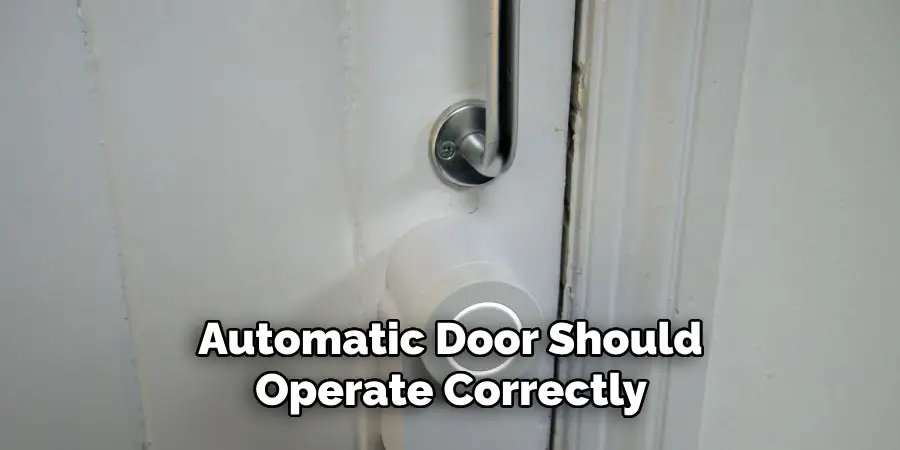
Providing clear instructions on the use of keys, access codes, or any security features ensures that everyone understands how to engage and disengage the lock properly. Misuse or mishandling can compromise the door’s functionality and security. Therefore, a brief orientation or a set of written instructions can go a long way in maintaining the integrity of the door’s locking mechanism and the safety of your premises.
Step 10. Review and Update Security Settings Periodically:
Regularly reviewing and updating the security settings of your automatic door is crucial in maintaining optimal security levels. Technological advancements or updates to your security system may introduce new features that can enhance your door’s protection. Additionally, changing security needs or potential vulnerabilities might necessitate adjustments to access codes, security features, or the introduction of new security protocols.
Scheduling periodic reviews allows you to ensure your automatic door’s security measures are up-to date-and effective, providing continuous safety for your premises. This proactive approach not only fortifies your security but also adapts to evolving security landscapes, ensuring your defenses remain robust against potential threats.
By following these ten simple steps, you can ensure your automatic door’s lock is always in proper working order, providing reliable protection and security for your premises.
5 Additional Tips and Tricks
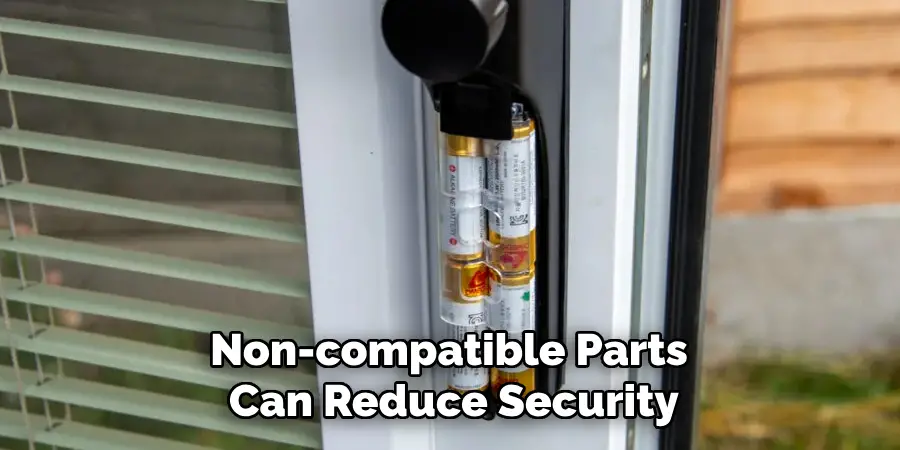
- Use Smart Lock Features: If your automatic door is equipped with smart lock technology, take advantage of features such as remote locking and unlocking through a smartphone app. This not only enhances security but also provides convenience, allowing you to control access to your home from anywhere.
- Regular Maintenance Checks: Ensure that your automatic door’s locking mechanism and sensors are functioning correctly by conducting regular maintenance checks. This can prevent potential security vulnerabilities caused by wear and tear or mechanical failures.
- Upgrade Your Security System: Consider upgrading your door’s security system with advanced features like biometric scanners or voice recognition. These technologies add an extra layer of security by ensuring that only authorized individuals can unlock the door.
- Install a Backup Power Supply: To ensure your automatic door’s locking mechanism remains operational during power outages, install a backup power supply. This can be a battery backup system or an uninterrupted power supply (UPS) to keep the door functional in any situation.
- Utilize Timed Locking Features: Many automatic doors come with an option to set timers for locking and unlocking. You can set your door to automatically lock at certain times of the day or night, adding an additional layer of security, especially during hours when you are less likely to monitor the door.
With these additional tips and tricks, you can enhance the security of your home with an automatic door.
5 Things You Should Avoid:
- Do Not Neglect Sensor Maintenance. Failing to keep the sensors clean and unobstructed can cause malfunctioning of the automatic locking system. Ensure sensors are regularly checked and cleaned for optimal performance.
- Avoid Using Non-Compatible Accessories: Always use accessories and components that are compatible with your automatic door system. Using non-compatible parts can reduce security and potentially malfunction.
- Don’t Ignore Software Updates: For automatic doors controlled by smart technology, neglecting software updates can make your system vulnerable to security breaches. Regular updates ensure the latest security patches are applied.
- Do Not Overlook Manual Overrides: Knowing how to manually override your automatic door is crucial in case of a power failure or technical issue. Ensure that all household members are familiar with the manual locking mechanism to prevent being locked in or out.
- Avoid Sharing Access Codes or Digital Keys Indiscriminately: Treat your digital keys or access codes as if you were a physical key. Do not share them widely or leave them in unsecured locations, as doing so can compromise your home’s security.
By avoiding these common mistakes, you can ensure your automatic door operates smoothly and provides optimal security for your home.
Why Is Your Automatic Door Not Locking?
There can be several reasons why your automatic door is not locking properly. Some possible causes include:
- Power Failure: If your automatic door relies on electricity, a power outage can prevent it from functioning.
- Dead Batteries: If your automatic door uses battery-operated sensors or locking mechanisms, dead batteries can cause malfunctions.
- Obstructions or Misalignments: Dirt, debris, or physical obstructions in the path of the door can prevent it from locking properly. Additionally, misalignments in the tracks or sensors can also cause issues.
- Mechanical Failure: Over time, wear and tear on the mechanical components of an automatic door can lead to malfunctions.
- Software Glitches: Software glitches or bugs can cause issues with the locking mechanism of automatic doors controlled by smart technology.
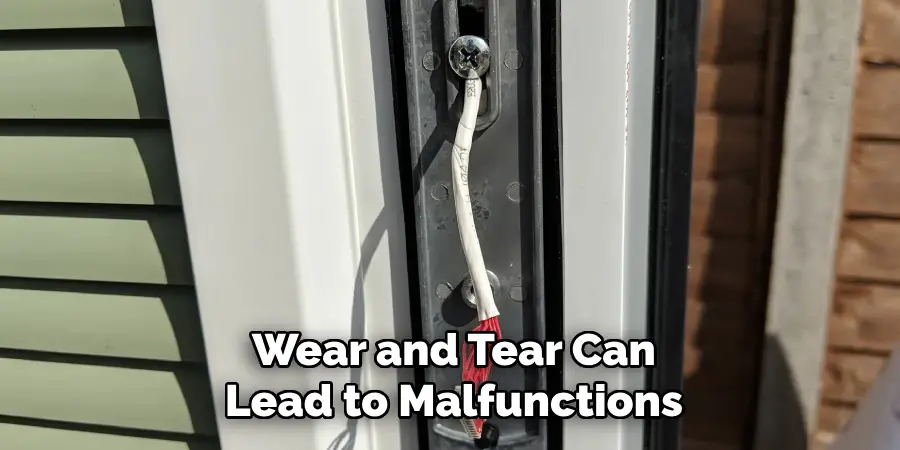
If your automatic door is not locking correctly, it is essential to troubleshoot and identify the root cause of the problem.
How Can You Troubleshoot Locking Issues?
Here are some steps you can take to troubleshoot and potentially fix locking issues with your automatic door:
- Check for any power outages or dead batteries that may be causing the issue.
- Inspect the sensors, tracks, and mechanical components for any obstructions or misalignments. Clean or realign as necessary.
- If your automatic door is connected to a smart system, check for any software updates that may be available.
- Consult the user manual or contact the manufacturer for guidance on how to manually override the locking mechanism in case of technical failures.
If these steps do not resolve the issue, it is best to seek professional assistance from a certified technician. They can accurately diagnose and fix any underlying problems with your automatic door’s locking mechanism.
How Does a Door Lock Work?
A door lock is a mechanical or electronic device that secures a door and prevents unauthorized access. The working principles of door locks may vary depending on the type and technology used, but here are the general steps involved in how a door lock works:
- Key Insertion: In traditional mechanical locks, a key is inserted into the keyhole to engage with pins inside the lock.
- Pins Align: When the key is inserted correctly, the pins align and allow the lock cylinder to rotate.
- Bolt or Latch Movement: As the lock cylinder rotates, it moves a bolt or latch that secures the door in place.
- Unlocking with Key: To unlock the door, the key is rotated in the opposite direction, disengaging the pins and releasing the bolt or latch.
- Electronic Locks: A digital code or biometric scan is used to activate an electric motor that releases the door’s locking mechanism for electronic locks.
In summary, a door lock works by engaging and disengaging mechanical components to secure or release a door.

Conclusion
In conclusion, how to lock automatic door involves a combination of proper installation, regular maintenance, and intelligent usage. From installing backup power supplies to utilizing timed locking features, each measure plays a crucial role in maintaining the door’s integrity and security.
Avoiding common pitfalls such as neglecting sensor maintenance, using incompatible accessories, ignoring software updates, overlooking manual overrides, and indiscriminately sharing access codes will further enhance the reliability of your automatic door system.
Troubleshooting any locking issues promptly by following the outlined steps can prevent minor problems from escalating into larger security risks. Understanding how a door lock works—whether mechanical or electronic—is fundamental in appreciating the complex mechanisms that safeguard our homes and ensure peace of mind.
The combination of proactive measures and informed usage ensures that your automatic door serves its purpose effectively, providing security and convenience without compromise.
